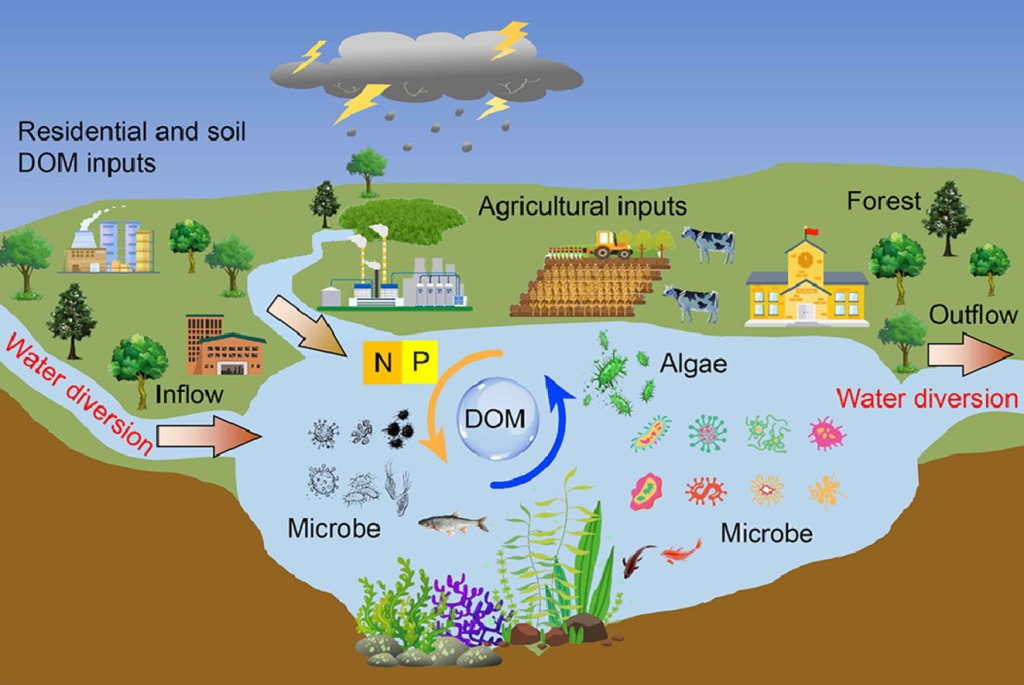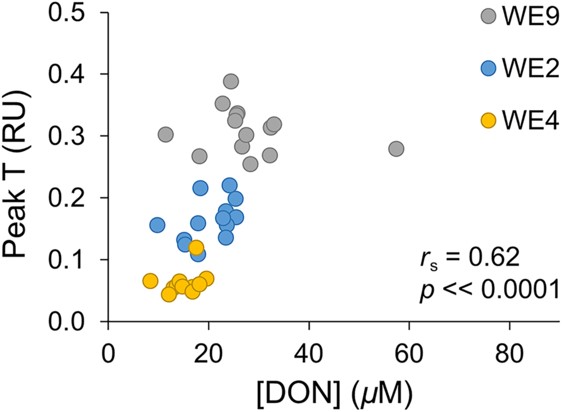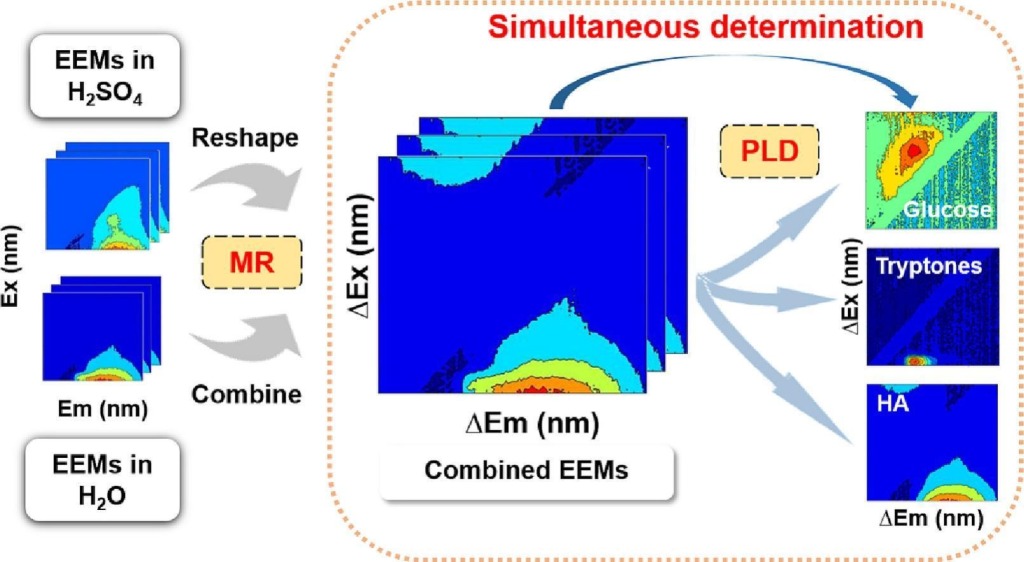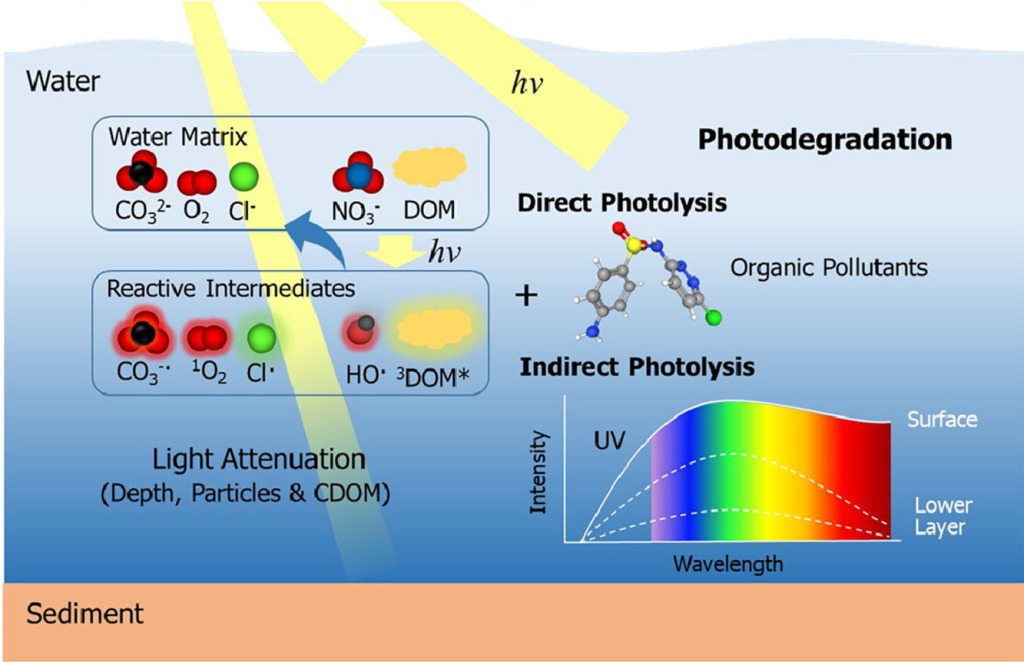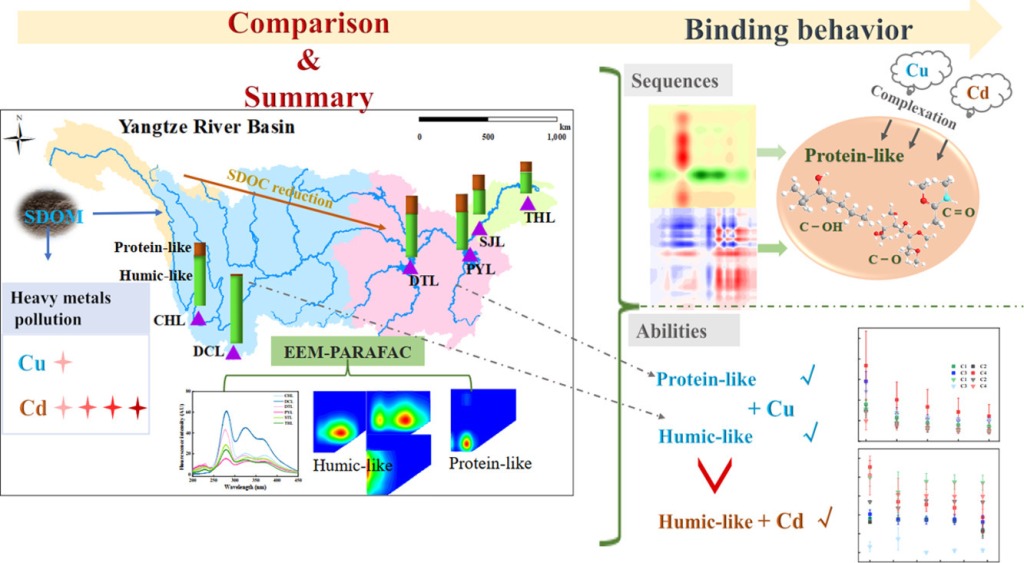
Authors
Lakes are hot spots for methane (CH4) emissions and particulate organic carbon (POC) production, which describes the methane paradox phenomenon. However, the current understanding of the source of POC and its effect on CH4 emissions during eutrophication remains unclear. In this study, 18 shallow lakes in different trophic states were selected to investigate the POC source and its contribution to CH4 production, particularly to reveal the underlying mechanisms of the methane paradox. The carbon isotopic analysis showed that the δ13Cpoc ranged from −30.28 ‰ to −21.14 ‰, indicating that cyanobacteria-derived carbon is an important source of POC. The overlying water was aerobic but contained high concentrations of dissolved CH4. Particularly, in hyper-eutrophic lakes, such as Lakes Taihu, Chaohu, and Dianshan, the dissolved CH4 concentrations were 2.11, 1.01, and 2.44 μmol/L, while the dissolved oxygen concentrations were 3.11, 2.92, and 3.17 mg/L, respectively. The intensified eutrophication increased the POC concentration, concomitantly promoting the dissolved CH4 concentration and the CH4 flux. These correlations revealed the role of POC in CH4 production and emission fluxes, particularly as a possible cause of the methane paradox, which is crucial for accurately evaluating the carbon budget and balance in shallow freshwater lakes.

